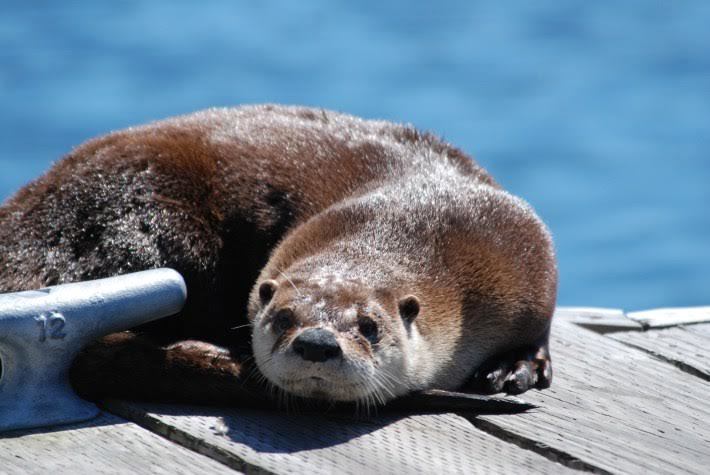They are charming and carnivorous, and can let humans know about environmental decline.
“Like other animals that feed on the top of the food chain, river otters tell us a lot about what’s happening,” said Joe Gaydos, chief scientist for the SeaDoc Society. “They inhabit marine water and fresh water and go on land so they integrate information from all three places.”
Citizens are being asked to take part in a state-wide project to track the trends of river otters. Seattle’s Woodland Park Zoo, as part of their Living Northwest conservation program, has invited the public to participate in the Otter Spotter program. The Green River flows from undeveloped Washington land through increasingly urbanized areas to become the Duwamish River – Seattle’s major industrial corridor since the early 1900s. The North American river otter calls the 65-mile waterway its home.
The U.S. Environmental Protection Agency has identified the Lower Duwamish (the final five miles of the river as it empties into the Puget Sound) as a Superfund site for environmental remediation. Studying the population trends of river otters and the toxins in their scat along the length of the river will help researchers gauge the level of pollution in the area.
If you observe a river otter, report your sightings at http://www.zoo.org/conservation/otterspotter#.V31-tZMrL8s to submit the online form. Sightings anywhere in the region will provide valuable data. Try to record the time of day, number of otters present, location of the sighting and behavior of the animals. And photos are welcome.
The river otter is a member of the mustelid (weasel) family and is comfortable on both land and water. They can dive as deep as 60 feet to find crab and fish for dinner. The species is very sensitive to pollution and at the top of the food chain, which means they are indicator species for water quality and habitat. If their prey is gone, the otters are gone.
The SeaDoc Society has done extensive research on the health of river otters in the Salish Sea. A 2007 study found that a parasite called Toxoplasma gondii is one of the most common disease agents known to infect river otters in the Northwest. It is transmitted from the fecal matter of feral and domestic cats. Feces deposited on land often travels to the ocean via fresh water and river otters are likely exposed when they drink water running into the ocean or eat filter-feeding bivalves like mussels that can concentrate the infective form of this parasite. They are also exposed to Leptospirosis, a disease that rats and mice carry.
Gaydos says that while the Pacific Northwest has a robust population – and in the San Juans the river otter is considered a nuisance to boaters – more than 20 states are spending millions to bring back wild river otters.
“The Otter Spotter program is a great opportunity for citizens to become involved in collecting meaningful data,” he said.




